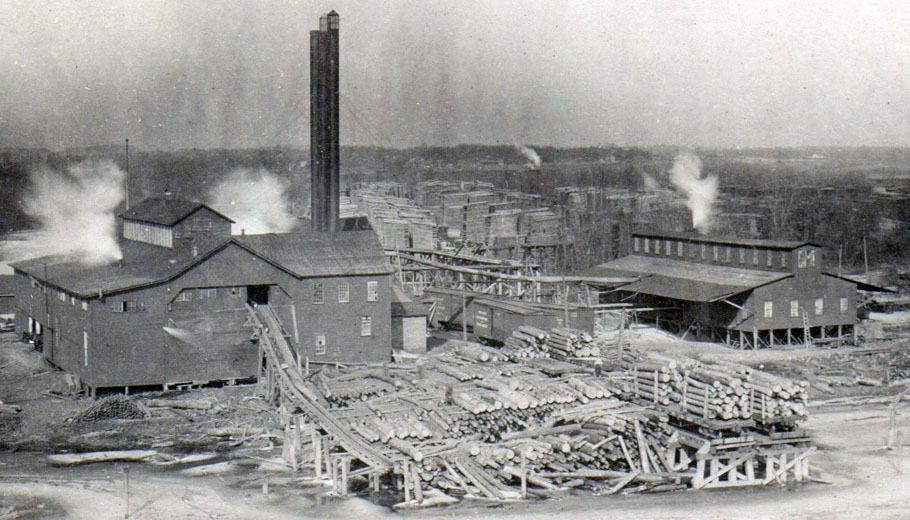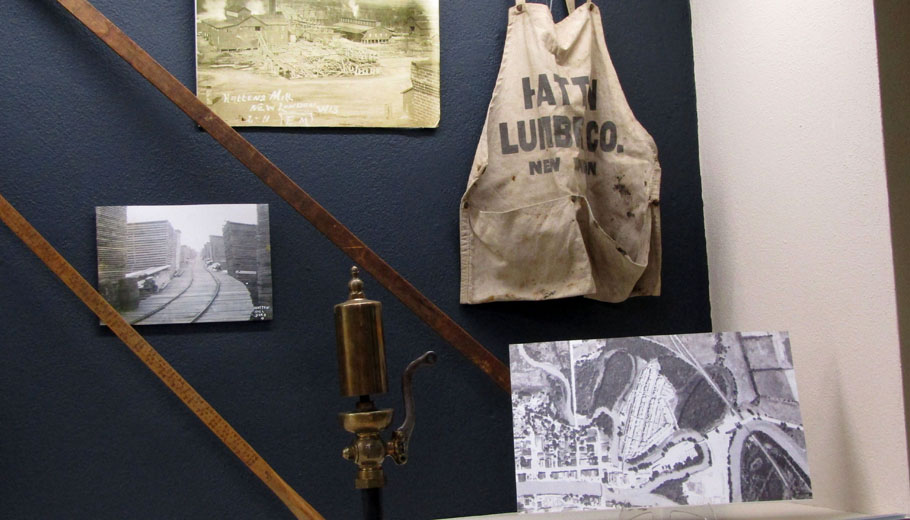
Museum exhibit highlights local industry
By Robert Cloud
Two rivers for transportation and uncleared forests for timber attracted early settlers to New London, according to Christine Cross.
Cross, director of the New London Public Museum, is currently organizing an exhibit on the history of local manufacturing.
“Made in New London” opens June 5 at the museum.
“New London was a good area for transportation,” Cross said. “It started with passable rivers, then rail.”
When European settlers first arrived, they found the Wolf and Embarrass rivers provided transportation for shipping lumber and other products from New London. The rivers also provided power for lumber mills, flour mills and condensing factories for dairy products.
Pioneer woodworker
Among New London’s early manufacturers was Christian Frederick Laib, who came from Germany via New York to New London in 1849.
Laib was a master woodworker who built cabinets, dressers, desks and game tables. He received a number of patents for his unique furniture designs beginning in the 1870s.
Cross said the exhibit will also include “the last piece of furniture that came off the assembly line at Simmons.”
Called a combo unit, this piece of children’s furniture featured a chest of drawers with an area for hanging clothes.
Simmons Juvenile Products Co. in New London built children’s furniture. It has roots back to the mid-19th century when the business was known as Wisconsin Cabinet and Panel Company. Thomas Edison purchased the business in 1917 to make cabinets for his phonographs.
In 1927, Edison Wood Products shifted its production to children’s furniture and eventually became Simmons Juvenile Products.
The New London Simmons plant closed in 2005 after the brand name and product lines were sold to Delta and production moved overseas.

Hatten Lumber Mill
“Made in New London” also includes Hatten Lumber Mill, which was owned by William Hatten from 1889 to 1937.
Hatten and his partner, James Meiklejohn, floated timber down the Embarrass River to their mill. They also purchased lumber from area farmers.
In the mid 1930s, Hatten donated $10,000 to help the city purchase 100 acres for a park and to build a stadium in New London.
President Roosevelt’s New Deal program, the Public Works Administration, employed New London residents during the Great Depression to build Hatten Memorial Stadium.
Hatten died in 1937 and the mill closed in 1970.
These are some of the businesses to be featured through photographs and artifacts in the exhibit, which continues through October.
Located at 406 S. Pearl St., the New London Public Museum is open from 10 a.m. to 5 p.m. Monday through Friday in the summer. Admission is free.
